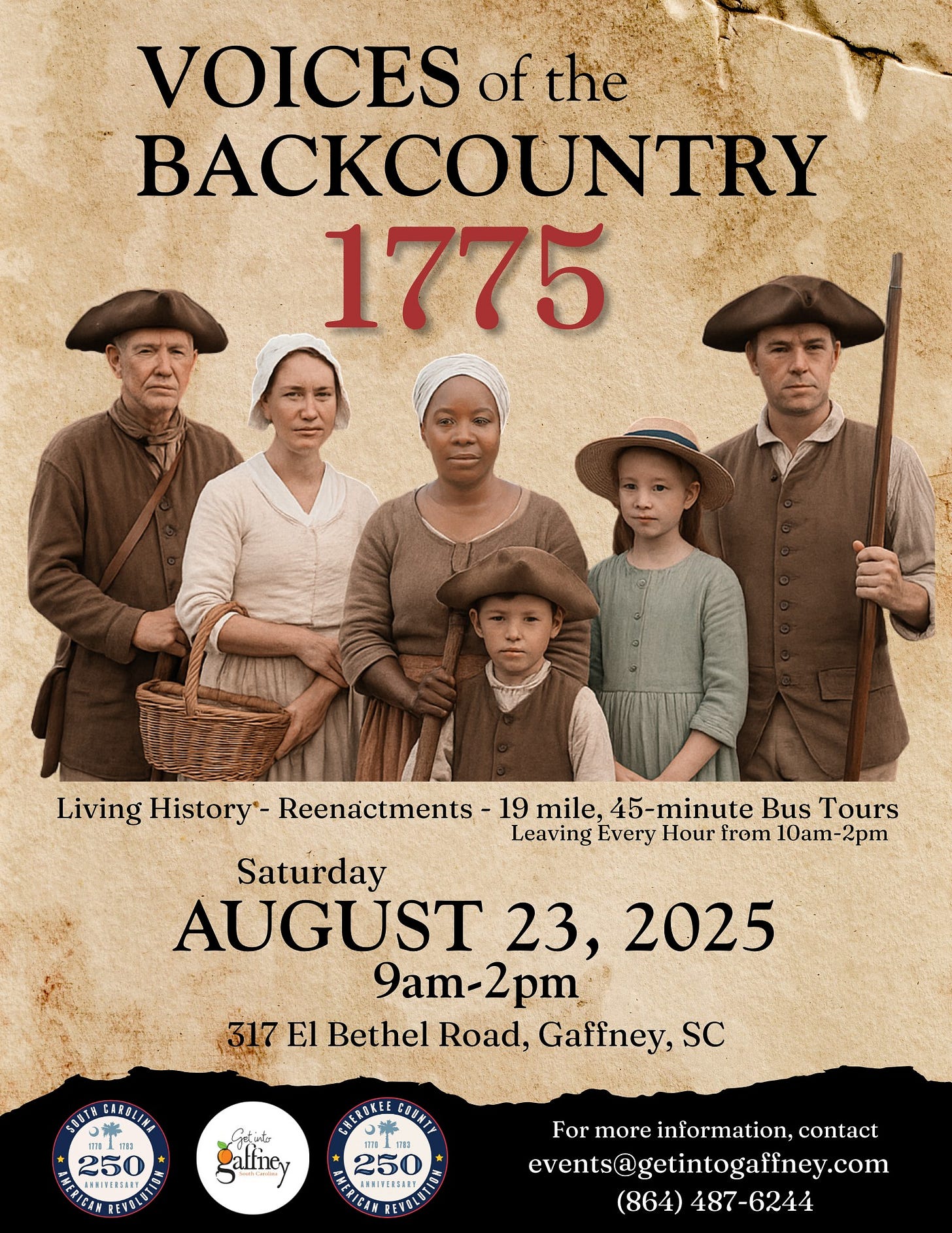#157: William Gilmore Simms: SC's Forgotten Bard + Voices of the Backcountry 1775
For South Carolina history lovers far and wide! Published weekly on Monday mornings. Enjoy weekly SC history articles, upcoming SC historical events, and other South Carolina recommendations.
Dear readers,
As summer deepens across the Palmetto State, I’ve found myself drawn once again to the stories that have shaped South Carolina. In today’s newsletter, we turn our attention to a figure whose name once echoed across literary salons throughout the country in the antebellum era: William Gilmore Simms, South Carolina’s most prolific 19th-century author.
Revered in his time and reassessed in ours, Simms offers us a lens into the ideals, contradictions, and aspirations of the Old South.
Whether you’re familiar with his swashbuckling novels or encountering him for the first time, I hope today’s essay sparks curiosity and conversation.
Sincerely,
Kate
(Writing from Greenville, SC)
Support the SC History Newsletter by considering heritages teas (inspired by South Carolina and American history!) from our fantastic sponsor Oliver Pluff & Co. — click on their beautiful ad below! :)
➳ Housekeeping for new subscribers!
New friends! There are over 100 previous SC History newsletters on topics ranging from the founding of Charleston, sunken Confederate submarines, railroad tunnels filled with blue cheese, and more! See our archive here!
Send me your comments or topic ideas: I love it when subscribers write to me! Have a SC History topic or question you’d like for me to write about? Have additional ideas or feedback? Just reply to this email and let me know!
Join us on social: Keep the conversation going and join over 100 other subscribers by becoming a member of our SC History Newsletter Facebook Community here!
If your email “cuts off”: In your email app or website, if my emails “cut off” for you, please click the title of the email and it will take you to the full post on the Substack. I don’t want you to miss any content!
Love the SC History Newsletter? Please click the button below to share with a friend!
➳ Featured Upcoming SC History Events
📜Voices of the Backcountry 1775: Living History, Reenactments (19 mile, 45 minute Bus Tours) — an SC250 event
🗓️ Saturday, August 23rd from 9:00 am - 2:00 pm
📍Gaffney, SC
💻 Website
From the event website:
“Join us Saturday, August 23, 2025, for a FREE, immersive historical event marking the 250th anniversary of Rev. William Tennent’s 1775 mission to rally support for American independence right here in Cherokee County.
Experience:
• Live reenactments of patriots, loyalists, and settlers
• A guided bus tour of key Revolutionary War sites
• A chance to "choose sides"—Patriot or Loyalist?
This family-friendly event brings the Revolutionary era to life for all ages. (Funding provided by the South Carolina 250 Commission and City of Gaffney)”
➳ 🗓️ Paid subscribers get access to my SC History Events Calendar that organizes all the upcoming SC history events I have discovered. Please let me know if you’d like to add an event to the calendar! Reply to this email to send me your events.
➳ 📚William Gilmore Simms: South Carolina's Literary Voice of the 19th Century
In the pantheon of Southern writers, few loom as large — or as complex — as William Gilmore Simms (1806–1870), South Carolina’s foremost literary figure of the antebellum period.
Celebrated in his lifetime as the “James Fenimore Cooper of the South” (Note: Cooper wrote The Last of the Mohicans), Simms was a prolific novelist, poet, historian, editor, and political commentator whose works shaped Southern identity and regional pride in the decades before the Civil War.
Though his national reputation waned after his death — largely due to his ardent support of slavery and secession — his writings remain crucial for understanding the intellectual, cultural, and political history of South Carolina. From romanticized tales of colonial resistance to historical novels set in the Revolutionary backcountry, Simms gave voice to a uniquely Carolinian version of America’s past. His contributions to Southern literature, identity formation, and regional history ensure his enduring relevance in the annals of South Carolina's cultural heritage.

🌴Early Life and Education in Charleston
William Gilmore Simms was born in Charleston, South Carolina, on April 17, 1806. His early life was marked by hardship: his mother died in childbirth, and his father abandoned the family and moved west. Simms was raised by his maternal grandmother “who told him stories of Charleston during the Revolutionary War and the exploits of his ancestors.” He was educated in local Charleston schools and briefly studied medicine and law. However, his real passion was literature. As a teenager, he became enraptured by the works of Shakespeare, Scott, and Byron. By his early twenties, he had published several volumes of poetry and was editing a Charleston newspaper, The Southern Literary Gazette. In these formative years, Simms developed the intellectual range and rhetorical flair that would characterize his vast body of work.
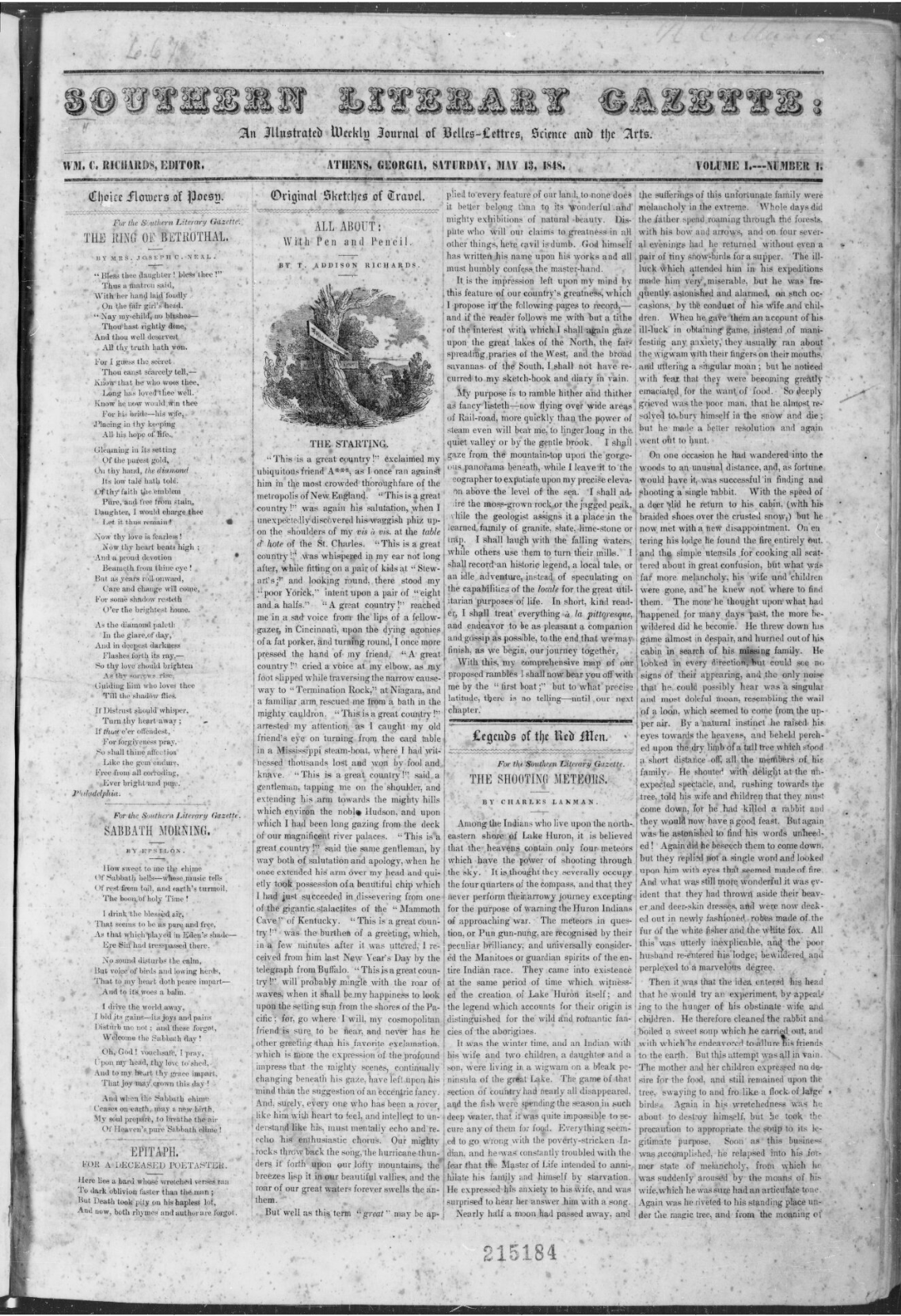
📜Historical Novels and the Southern Frontier
Simms is best remembered for his historical romances, especially those rooted in South Carolina’s colonial and Revolutionary War past. He wrote more than 25 novels, many of which focused on South Carolina’s backcountry, portraying frontier life, partisan warfare, and the tensions between civilization and wilderness. His most acclaimed novel, The Partisan (1835), tells the story of South Carolinian patriots resisting British rule during the Revolution. This was followed by Mellichampe (1836), Katherine Walton (1851), and The Forayers (1855), forming part of what became known as his Revolutionary War series.
Through these narratives, Simms aimed to establish a Southern counterpart to the frontier tales of James Fenimore Cooper. But unlike Cooper’s depictions of western expansion, Simms focused on the Carolinas — particularly the Upcountry — and recast the American Revolution not as a unifying national cause but as a fierce civil war between patriots and loyalists. In doing so, he created a distinctly Southern Revolutionary mythology, one steeped in honor, violence, loyalty, and the rugged terrain of the pine forests and swamps.
At first, Southern readers did not fully appreciate Simms as a writer because he did not come from an aristocratic background. Though as his writing became more and more acclaimed, he became known as the “Cooper of the South” and Southerners began to take notice — as did other famous writers. In 1845, Simms published The Wigwam and the Cabin (1845); a compilation of short stories, one of which describes a loyal slave. Edgar Allan Poe thought the collection "decidedly the most American of American books" and declared Simms to be "immeasurably the greatest writer of fiction in America."

Simms also believed that literature had the power to forge a regional identity rooted in history and virtue. His characters, often larger-than-life, upheld ideals of bravery, sacrifice, and fidelity to Southern values. This vision resonated with South Carolinians who were increasingly wary of Northern influence in the decades before the Civil War.
✒️Simms as Historian and Cultural Patriot
Beyond his novels, Simms was an avid historian and cultural provocateur. He wrote histories of South Carolina and its people, including The History of South Carolina (1840), The Life of Francis Marion (1844), and South Carolina in the Revolutionary War (1854). These works were not dispassionate accounts but spirited celebrations of Carolinian heroism. Simms portrayed South Carolina as a cradle of American independence and valor, positioning his home state as central to the national narrative. The History of South Carolina served for “several generations” as the standard school textbook of the state’s history.
Simms also contributed extensively to periodicals and journals, editing and writing for the Southern Quarterly Review, Magnolia, and other literary magazines. He used these platforms to promote Southern literature, defend slavery, and push back against Northern literary and cultural dominance. For Simms, writing was a form of cultural warfare: a means of asserting Southern distinctiveness and intellectual legitimacy in a union he increasingly saw as fracturing. It is worth noting as well that on top of his novels and history books, Simms was so prolific as a writer that he averaged “one book review and a poem per week for 45 years.”
Here is an excerpt of his poem about South Carolina’s most famous Revolutionary War Hero, Francis Marion, also known as “The Swamp Fox”":
WE follow where the Swamp Fox guides,
His friends and merry men are we;
And when the troop of Tarleton rides,
We burrow in the cypress tree.
The turfy hammock is our bed,
Our home is in the red deer's den,
Our roof, the tree-top overhead,
For we are wild and hunted men…But courage, comrades! Marion leads;
The Swamp Fox takes us out to-night;
So clear your swords and spur your steeds,
There's goodly chance, I think, of fight.
We follow where the Swamp Fox guides,
We leave the swamp and cypress tree,
Our spurs are in our coursers' sides,
And ready for the strife are we.
The Tory camp is now in sight,
And there he cowers within his den;
He hears our shouts, he dreads the fight,
He fears, and flies from Marion's men.
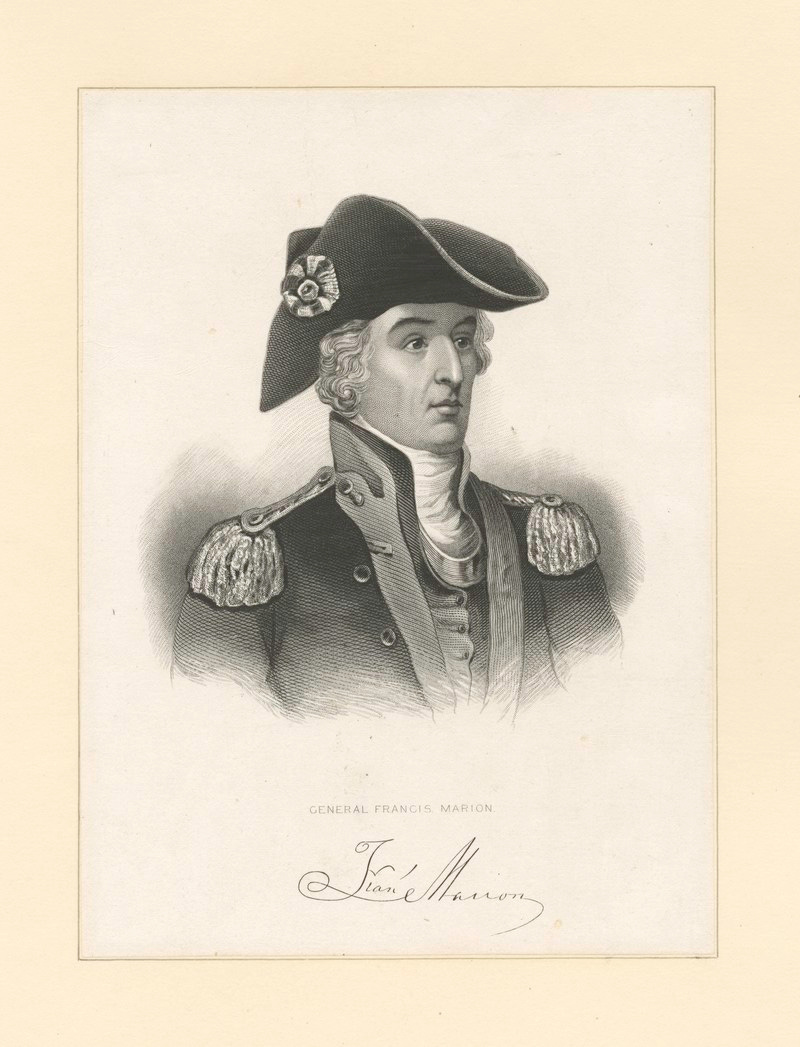
Simms was not only a novelist and a poet, but a cultural architect. He championed the creation of a Southern literary canon and mentored other writers, including Paul Hamilton Hayne and Henry Timrod, who would become part of South Carolina’s postbellum literary heritage.
⚖️Literary Genius, Troubling Convictions
Simms’s legacy is complicated by his staunch defense of slavery. While earlier in his career he had expressed moderate views, by the 1830s and 1840s, he had become an unapologetic defender of the institution. He viewed slavery not only as economically necessary but as a natural social order. His political essays, lectures, and editorials argued that abolitionist critiques were hypocritical and culturally imperialist, and he warned that emancipation would lead to chaos and social collapse.
This position alienated many of his Northern contemporaries and ultimately contributed to the decline of his national reputation. Simms had once enjoyed friendships with literary figures like Washington Irving and William Cullen Bryant, but his pro-slavery stance and support for secession led to his exclusion from mainstream American letters.
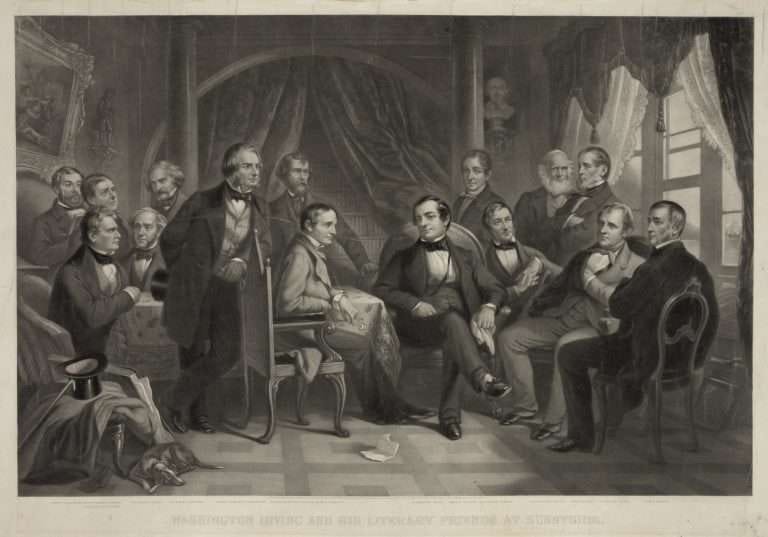
Still, within the South — and particularly in South Carolina — Simms remained a celebrated figure. His writings reinforced the ideological foundations of Southern nationalism and helped articulate the intellectual case for disunion.
📉Civil War and Decline
When the Civil War broke out, Simms was already in his mid-50s, but he remained active as a propagandist and moral supporter of the Confederacy. He continued to publish essays and poetry promoting the Southern cause, even as Charleston came under attack and his personal fortunes declined.
His plantation, Woodlands, near Bamberg in present-day Barnwell County, was burned by Union troops in 1865, a loss he bitterly mourned. After the war, Simms attempted to rebuild his literary career, but the world had changed. The Confederacy was defeated, Reconstruction was underway, and the appetite for antebellum romanticism had diminished. Simms died in Charleston in 1870, nearly destitute.
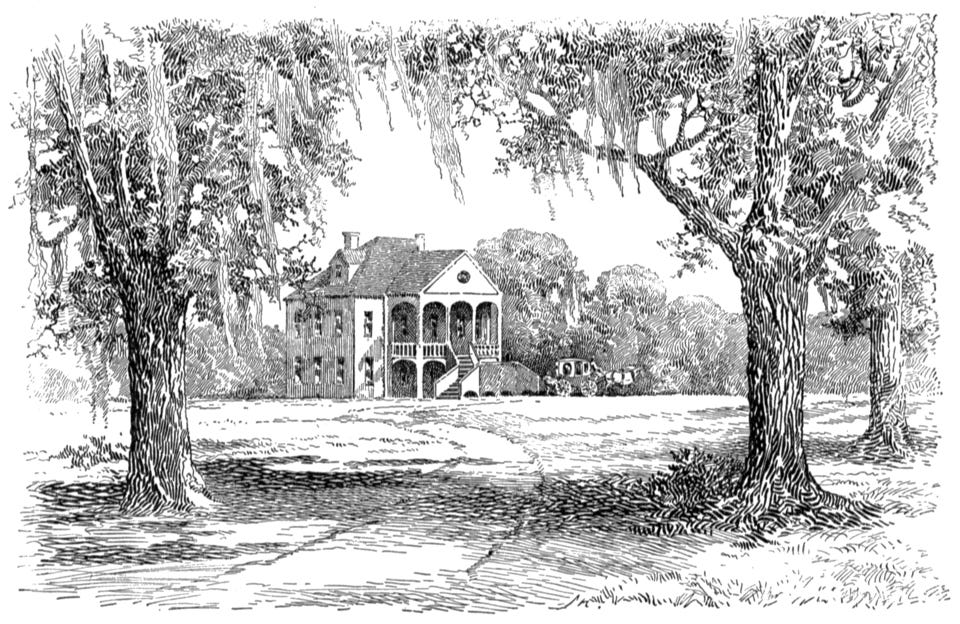
Conclusion
William Gilmore Simms was many things: a novelist, historian, editor, and ideologue. His literary output helped build a sense of regional pride and identity in antebellum South Carolina and gave voice to the people, places, and legends of the Palmetto State. While his pro-slavery stance and support of secession cannot be ignored — and rightly darken his legacy — his contributions to Southern letters and historical memory remain profound. Simms did more than write about South Carolina — he helped invent the South Carolina that so many came to imagine. As such, he remains a pivotal figure in the state’s cultural and intellectual history, inviting both admiration and reflection in equal measure.
If you voted just “OK” on the newsletter today, I want to hear from you! Reply to this email and send me your feedback. :)
➳ Sources —📚William Gilmore Simms: South Carolina's Literary Voice of the 19th Century
“Henry Timrod.” Wikipedia, Wikimedia Foundation, https://en.wikipedia.org/wiki/Henry_Timrod. Accessed 3 Aug. 2025.
Honorable and Brilliant Labors: Orations of William Gilmore Simms. Edited by David Moltke-Hansen, University of South Carolina Press, https://manifold.sc.edu/read/honorable-and-brilliant-labors-orations-of-william-gilmore-simms/section/df9dcc48-3c6e-4c11-ad6e-cb7208034f4a. Accessed 3 Aug. 2025.
“The Pro-Slavery Argument: As Maintained by the Most Distinguished Writers of the Southern States.” Internet Archive, Harper & Brothers, 1852, https://archive.org/details/proslaveryargume00harp/page/n7/mode/2up. Accessed 3 Aug. 2025.
Simms, William Gilmore. AllPoetry, https://allpoetry.com/William-Gilmore-Simms. Accessed 3 Aug. 2025.
“Simms, William Gilmore.” South Carolina Encyclopedia, University of South Carolina, https://www.scencyclopedia.org/sce/entries/simms-william-gilmore/. Accessed 3 Aug. 2025.
“Timrod, Henry.” South Carolina Encyclopedia, University of South Carolina, https://www.scencyclopedia.org/sce/entries/timrod-henry/. Accessed 3 Aug. 2025.
“William Gilmore Simms.” Civil War Book Review, Louisiana State University, https://repository.lsu.edu/cgi/viewcontent.cgi?article=2332&context=cwbr. Accessed 3 Aug. 2025.
“William Gilmore Simms.” Encyclopedia Virginia, Virginia Humanities, https://encyclopediavirginia.org/13125hpr-b6c5844cac7ab02/. Accessed 3 Aug. 2025.
“William Gilmore Simms.” Wikipedia, Wikimedia Foundation, https://en.wikipedia.org/wiki/William_Gilmore_Simms. Accessed 3 Aug. 2025.
“Woodlands (Bamberg, South Carolina).” Wikipedia, Wikimedia Foundation, https://en.wikipedia.org/wiki/Woodlands_(Bamberg,_South_Carolina). Accessed 3 Aug. 2025.








